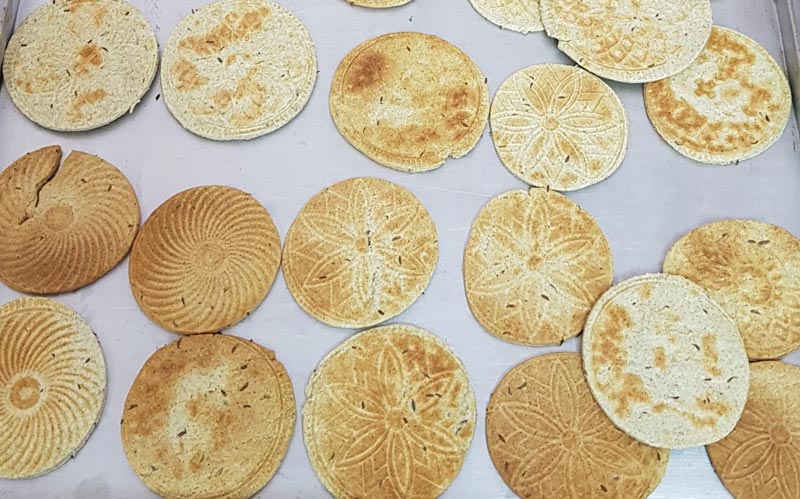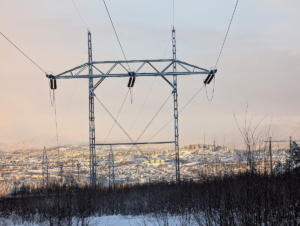With a growing global population, there is an increased demand for food in the world. Reducing food loss and waste, and utilising new resources, are critical measures to ensure sustainable food systems and future food security. The SuMaFood project aims to demonstrate how seaweed and residue raw materials from fish can be used for human consumption.
Food waste and the global food systems
Globally, about one third of all food produced is wasted at some point in the food value chain every year. Food waste has significant climate and environmental impacts due to increased greenhouse gas emissions and waste disposal, and the associated futile use of energy, water, and land. The wasting of food also has a negative economic impact in terms of the associated costs and higher market prices.
The pressure on the global food systems is likely to increase in the years to come. The population growth, increasing urbanisation, and changes in eating habits are trends that set the stage for a rising demand for food. The UN Food and Agriculture Organization (FAO) has estimated that the expected demand requires a 70% increase of global food production by 2050.
Not only do we need to produce more food than before, but we also need to do it in a more efficient and sustainable manner. Food waste is a major global challenge that threatens sustainability and food security.
Sustainable blue economy
A sustainable blue economy is part of EU’s strategy to increase the use of marine resources to make novel foods and dietary supplements. Increased utilisation of marine resources for alternative food production will help alleviate the pressure on land resources for agriculture, in addition to mitigating climate change and enabling food security and sustainability. Moreover, there are several nutritional and health benefits from marine food due to the high level of proteins, omega-3 fatty acids, and vitamins.
Yet there is a significant potential for improvements in the marine food supply systems. Fish and seafood constitute the commodity group with the third largest food loss and waste, at about 35%. An upgrade of the supply systems, e.g., by waste reduction and full utilisation of the available biomasses, will be a valuable contribution to advancing the blue bioeconomy towards increased sustainability and competitiveness.
The SuMaFood project
SuMaFood is a transnational project that addresses innovative utilisation of residual raw materials from the fish processing industry and seaweed. The main objective is to develop eco-innovative preservation solutions for marine biomasses and to demonstrate how new marine-based food ingredients can be made available and attractive to the consumers.
The fish by-products utilised in SuMaFood are leftover materials from cod and salmon in the preparation of fish fillets or other market products. Current utilisation of industrial fish-processing waste is usually the production of fish oil, fish meal, and biogas. Smaller fractions of fish residues are used to produce functional food, cosmetics, supplements, or pharmaceutical products.
The focus in SuMaFood is to devise novel and innovative methods for processing and preservation, including improved solutions for separation and fractionation of fish residues, low-temperature stabilisation, hydrolysation and drying. In addition, raw materials of macroalgae (seaweed) will be dried, analysed, and tested as a food ingredient.
Fish protein hydrolysates
Innovative techniques for separation and fractionation of fish residues are important steps to enhance the utilisation of rest raw materials. Cooling of fish residues is required to slow down bacterial degradation, and different cooling and freezing methods are being investigated and compared with respect to energy efficiency and shelf-life prolongation.
Hydrolysation and oil separation are tested in the project to achieve a high-quality fish protein hydrolysate (FPH). This is performed by NUAS Technology AS, a Norwegian partner with a developed and patented hydrolysis technology. FPH is one of the most promising and sustainable approaches to enhance the utilisation of residual fish raw materials. FPHs not only have good functional properties but also a very high protein content and high nutritional value.
The challenges of fish protein hydrolysates are issues such as bitter taste, fish-like smell, and poor stability. Due to these, FPHs have not yet become commercially available for human consumption. The ambition of SuMaFood is to overcome these challenges and contribute to the inclusion of FPHs into the fish processing lines. The target products are marine biomass powders that can be used as food or ingredients for dietary needs.
Drying of marine products
Drying is a key technology for preservation and stabilisation of food products. The aim of drying in most cases is to extend the shelf life by lowering the water content and with that the water activity. At the same time, the product structure and appearance will be defined by the drying process.
Marine products are sensitive to high temperatures due to protein degradation and lipid oxidation. This means that the application of high-temperature air in drying systems reduces the product quality to a certain extent. Nonetheless, for fish meal or powder production for feed purposes this is acceptable, especially if the lipid fraction has been separated out in advance.
Drying technologies
The aim of SuMaFood is to manufacture high-quality marine powders that have a promising market potential. To this end, three innovative drying technologies are being investigated that have the capability of providing faster drying times and being more energy efficient than conventional technologies such as drum or spray dryers, with the aim of maintaining an excellent product quality.
The three drying technologies are microwave vacuum drying, heat-pump-assisted drying, and pulse combustion drying.
Microwave vacuum drying works for both frozen and un-frozen biomass and can be faster and more energy-efficient than conventional vacuum dryers. The use of vacuum eliminates oxidation, and the reduced drying time is both energy saving and helps to improve the preservation of the product texture and its nutritional content. Improved product quality is expected from this technology.
Heat-pump-assisted drying is a concept for energy recovery in the drying system. Latent heat of moist air from evaporation at the dryer outlet is recovered by the heat pump, which upgrades this heat and reuses it to heat up dry air that enters the dryer. This technology has the potential for significant energy savings.
Pulse combustion drying is a novel spray-drying technology where a pulse combustor is used to emit rapid pulsating jets that instantly transform liquids and pastes into powder of very high quality. An important benefit of the technique is that it enables direct drying of highly viscous products, such as liquid fish residues, which means that higher concentrated products with less water can be dried. This is more energy efficient than conventional spray dryers, and the technique produces powders with high product quality and nutritional value.
A prototype of the pulse combustion dryer is currently being built by Ekonek, a SuMaFood partner based in Spain, and will be installed at SINTEF Energy Lab as soon as initial testing is completed.
Marine powders as ingredients in bakery products
Dried powders from fish protein hydrolysate and seaweed are being analysed and tested as part of SuMaFood as ingredients in bakery and snack products. The products are made at Transilvania University of Braşov, a SuMaFood partner from Romania.
Sensorial analyses of the products have shown their characteristics in terms of aroma, bitterness, saltiness, and sour taste related to the concentration of marine powders in the baking flour. Preliminary responses of a tasting panel indicate that there is a general consumer acceptability of salty snacks with the addition of up to 6% powder from fish protein hydrolysate to the recipe, while for bread an addition of up to 3% fish protein powder received an acceptable tasting score.
The limiting characteristics of the products are often the specific aroma, or the excessively sour or salty taste. The specific taste and the persistence of the aroma can be partially concealed by smell and taste masking, however. The initial trial tasting has shown that consumer acceptance increases with the addition of cumin seeds, garlic powder, or rosemary to the bakery recipes.

Market potential of marine powders
The marine powders produced in SuMaFood have the potential to be introduced as a valuable addition to the human food chain. As well as additives to bakery products, powders can be used as ingredients for noodle and pasta products, in dairy products and instant soups, or directly as nutritional supplements. To realise this, several challenges related to product quality and market barriers need to be overcome.
Public acceptance is such a barrier, as there is a general scepticism towards marine ingredients in functional foods. Bitter taste and fishy smells are undesirable food characteristics to most people, and stability and extended shelf life are also crucial for consumer acceptance and the marketing of such products.

Beyond the application of innovative methods to produce high-quality marine powders, SuMaFood also addresses post-processing techniques to enable enhanced preservation and the stability of such products. The use of garlic or herbs, such as cumin and rosemary, adds flavour and masks undesirable taste, but it also adds antioxidants to the final products. This is an effective method to reduce lipid oxidation in food.
Another preservation method being addressed is active packaging of products in which antioxidant compounds are microencapsulated into the packaging material. The encapsulation technique has the benefit that the active compound is released from the packaging at controlled rates, thus preserving the concentration of antioxidants for a very long time and increasing the shelf life considerably.
In addition to consumer acceptance, economic and legislative barriers must be resolved before novel marine-based powders can be introduced into the food system. The potential market may be large but must be evaluated towards cost efficiency and the quality and market value of the products. Food handling regulations must also be committed to, and an approval by the EU Commission must be given before novel foods and food ingredients can enter the market.
The innovative processing and preservation technologies being investigated in SuMaFood are tailored to provide significant advancements in the supply systems of the blue bioeconomy value chain. This will contribute to reduction of waste in the fish processing lines but also to enhanced utilisation of seaweed for human consumption. High-quality marine powders, rich in proteins, vitamins, and omega-3 fatty acids have the potential of becoming a sustainable and valuable addition to the future food supply.

The BlueBio COFUND
SuMaFood is a 7-way transnational project between partners from Norway, Greece, Romania, and Spain. The project is funded by the BlueBio COFUND, which is the new ERA-NET Cofund on the Blue Bioeconomy, and gathers 27 partners from 16 European countries. The main objective of the BlueBio COFUND is to establish a coordinated R&D funding scheme that will strengthen Europe’s position in the blue bioeconomy.
The project is coordinated and led by SINTEF Energy Research, with NTNU and NUAS Technology AS as Norwegian partners, National Technical University of Athens (NTUA) and FORTH/PRAXI Network as Greek partners, Transilvania University of Braşov as Romanian partner, and Ekonek as the partner from Spain.










Comments
No comments yet. Be the first to comment!